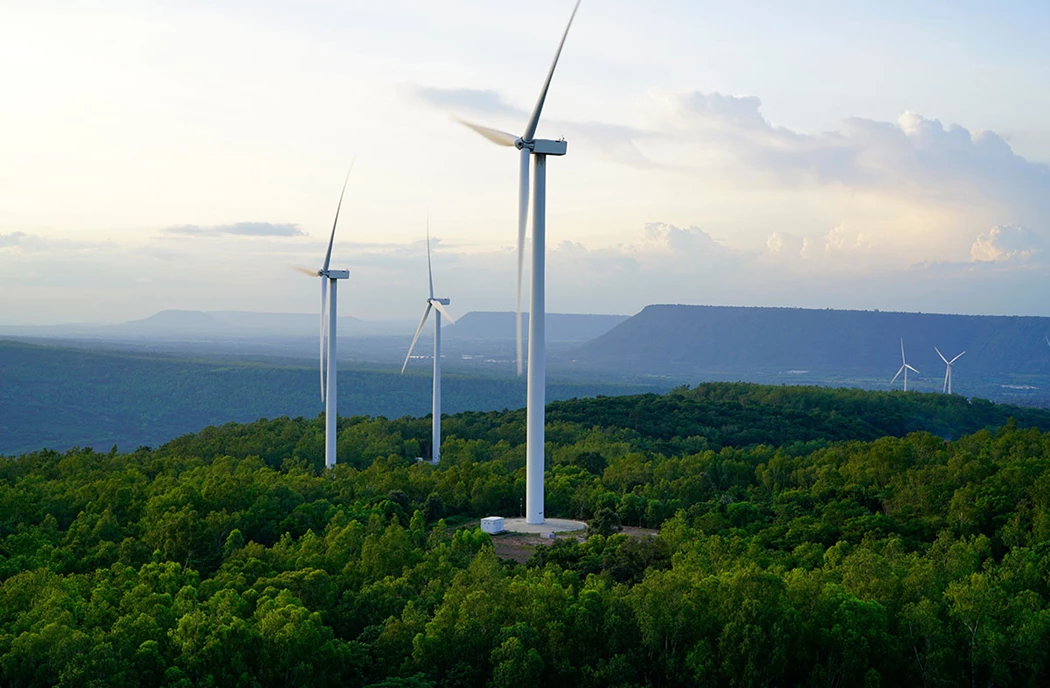Bill Gates-Backed Startup Pilots Unique Battery to Help Heavy Industry
(Bloomberg) -- A thermal battery startup backed by Bill Gates’ Breakthrough Energy Ventures has launched its first commercial-scale system, a major step toward its goal of weaning heavy industry off fossil fuels.
With its pilot project up and running at a facility in Fresno, California, Antora Energy plans to ship the technology to its first buyers in 2025.
Unlike a lithium-ion battery, which stores electricity as chemical energy, Antora’s thermal battery system keeps it as heat inside carbon blocks at temperatures above 1,800C (3,272F). It can discharge that energy directly as heat or as electricity, which it can do by converting the heat back to electricity via thermophotovoltaic cells, similar to those found in solar panels. The technology could prove particularly useful at industrial facilities like cement and steel plants, which require high heat in the manufacturing process and traditionally run on fossil fuels like natural gas and coal.
Because the Antora system can discharge power both as thermal heat and electricity, “you can achieve the benefits of industrial CHP, combined heat and power, in a zero-carbon way,” said Jon Glass, the acting deputy director for commercialization at the Department of Energy’s Advanced Research Projects Agency — Energy (ARPA-E), which awarded Antora more than $7.75 million as part of a program aimed at developing long duration energy storage systems.
Industrial plants typically require high heat and steady power capable of running 24/7, making it difficult for them to rely on intermittent renewable energy sources like wind and solar. Decarbonizing these sectors of the economy will be vital in part because they are projected to be the US’s largest source of greenhouse gas emissions by 2030. Antora’s battery is poised to store and discharge energy, either in the form of heat or electricity, smoothing out intermittency issues.
“What the plant really cares about is having an uninterruptible, reliable supply of process heat,” said Breakthrough Energy Ventures partner Christina Karapataki. “Whether it's coming from a natural gas boiler or a coal-fired boiler, or whether it's coming from an Antora system heating up an oil pipeline, the plant really doesn't care.”
She estimated that the market for industrial plants within the US that require process heat and power to be $60 billion a year, and potential customers include chemical suppliers, the fuels industry, cement, steel, oil and gas refining, as well as food and beverage.
The Sunnyvale, California-based startup will start by targeting potential customers in windy states like Kansas and Iowa, where electricity generated by wind turbines is cheaper than natural gas at certain hours, and then move to sunny states, where its batteries can store excess solar energy. Long term, Chief Executive Officer and Co-Founder Andrew Ponec said he sees a trajectory where an Antora system could beat fossil fuels on cost with no subsidies. Research from climate policy think tank Energy Innovation Policy & Technology LLC found that thermal batteries have the potential to cut US industrial heating power costs in half, making electricity cost competitive with natural gas.
Currently, Antora is building out a battery manufacturing facility in the Bay Area that it expects to be completed by 2024. Ponec said the startup already has a number of customers lined up ready to install the Antora system once the production line is up and running, though he declined to name any.
Now that the pilot is up and running, Ponec said the challenge is not technological, but economic. The company’s business model hinges on installing its equipment at customer sites and selling the heat and power. To do that, it has to work with financial partners to get project capital to actually build the system. Outfitting a single plant to run on Antora equipment would cost tens of millions of dollars, so installing dozens of projects would require significant capital. Accessing that capital would require proving to investors that the technology is low-risk.
“I think where the challenge is biggest is who funds units two or three through 10 where it's not the very first of a kind, but the technology still doesn't look yet like a solar or wind,” Ponec said. “There haven't been many years of operational data and so people still need to get into the details of evaluating if it is a risk that their company wants to take.”
(Updates with estimated annual size of market in 7th paragraph.)
©2023 Bloomberg L.P.





